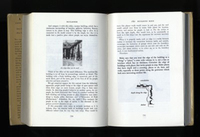A Pattern Language
Emmet Byrne, Alex DeArmond & Jon Sueda-
-

- TASK (Emmet Byrne, Alex DeArmond & Jon Sueda) for the Architectural Association, 2007
-
A Pattern Language: Towns, Buildings, Construction by Christopher Alexander, Sara Ishikawa and Murray Silverstein of the Center for Environmental Structure of Berkeley, California and its accompanying website serve as a companion to our inquiry.
Pattern Language describes a collection of 253 highly structured patterns divided into three broad categories: towns, buildings, and construction, and suggests that the same set of laws can be applied to structures at any scale. As a practical guide to help citizens understand their environment (and even build their own houses), this book encourages a democratisation of information that relieves the architect of his/her role as the exclusive idea-provider. In turn, Alexander advises architects to consider new projects in a global, everyday and political context, emphasising their obligation to shape society in a responsible manner.
Task Newsletter uses Alexander’s ‘Green-Making Sequence’ pattern as a starting point. The author clearly outlines the steps needed to turn an unused neighbourhood site into a green, cooperative meeting space, starting by identifying local flora and ending with petitioning the city for future subsidies. As with all of his patterns, it should be appreciated first and foremost for what it is: a deceptively simple and literal strategy for improving one’s environment. At the same time, the knowledge that his patterns are applicable to any endeavour encourages the reader to simultaneously translate them into any personally relevant context — in our case, the structure of a publication venture: a newsletter.
-
-

- A Pattern Language: Towns, Buildings, Construction Oxford University Press, 1977
-
-
-

- A Pattern Language: Towns, Buildings, Construction Oxford University Press, 1977
-
-
-

- A Pattern Language: Towns, Buildings, Construction Oxford University Press, 1977
-
-
-

- A Pattern Language: Towns, Buildings, Construction Oxford University Press, 1977
-
-
-

- A Pattern Language: Towns, Buildings, Construction Oxford University Press, 1977
-